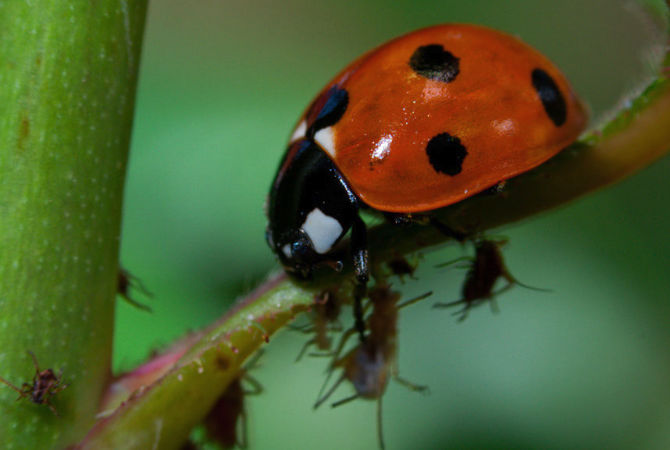With over 500 aphid species found in Great Britain, according to the Royal Horticultural Society, every gardener is bound to be plagued with the tiny, pear-shaped pest at one time or the other. Aphids, also called plant lice, greenfly and blackfly, come in assorted colors of white, black, yellow, green, pink and speckled, though all aphids regardless of color, damage plants in the same way. However, certain aphids prefer certain plants to others, and if you notice an aphid problem on one crop, it doesn’t necessarily mean those same aphids will attack all your other plants.
For example, the mealy cabbage aphid (Brevicoryne brassicae) attacks vegetables such as cabbage, Brussels sprouts and cauliflower and is usually a problem during the months of April through October. Whereas, there are various species of aphids called fruit aphids that attack fruit crops such as strawberries, blackberries and raspberries during the flush of new growth and fruiting in springtime.
The vast majority of adult aphids are wingless, though almost every type can produce wings, and those wings are useful when the insect’s food source is depleted and they need to move to another source. Some aphids have a wooly or a waxy coat due to the waxy secretions that cover their bodies in a grey or white substance.
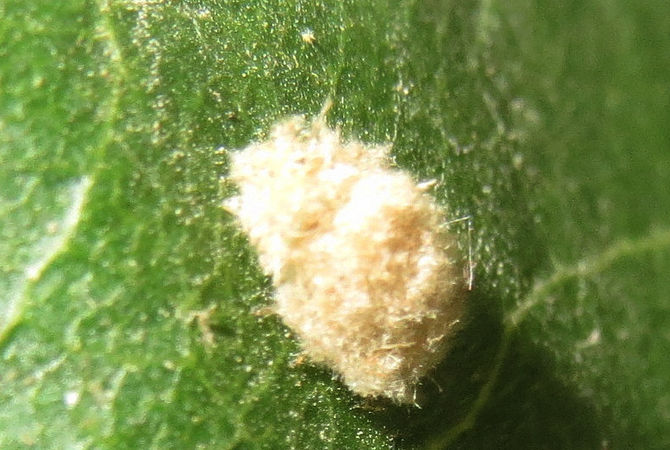
Aphid Damage
Aphids are soft-bodied insects usually ranging in size of 1/16 to 1/8-inch in length and typically congregate in mass colonies on plant stems, leaves or other tender portions of the plant. Think vampire, when it comes to aphids and the damage they do in the garden. The insect has a small mouthpart it uses to pierce the plant and suck out its juices, which causes distortion in foliage, yellowing, stunted growth, leaf curl and if populations are large, plant death.
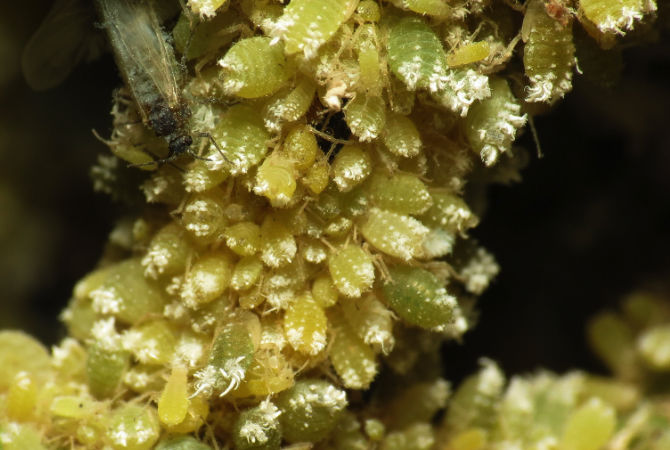
Besides the damage aphids create by sucking out the plant’s juices, they also secrete a sweet and sticky substance called honeydew, which drops on the plant’s foliage and attract the fungus sooty mold, which covers the plant in black. Usually a small outbreak of sooty mold won’t kill a plant, but if the quantity is large, covering most of the plant’s surface, photosynthesis is affected, which in turn affects the plant’s growth. Many times, you can remove sooty mold by spraying the plant with a strong blast of water or wiping the leaves off with a wet soapy cloth.
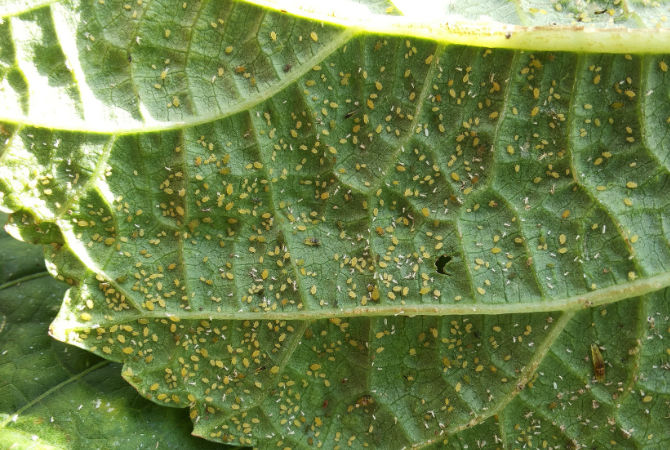
Ants running up and down your plants can be a good indicator you might have an aphid problem. The ants work together like little shepherds, herding the aphids together so the ants can milk them of their honeydew.
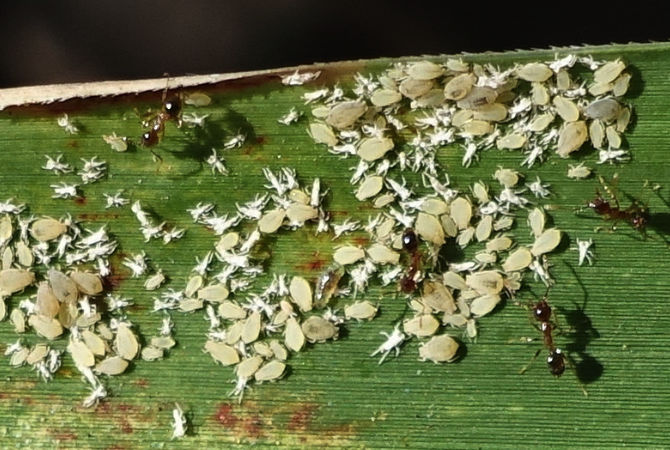
Aphids transmit viruses to certain vegetable crops and it only takes a small quantity of the pests to infect the plant. Plants and fruits infected with virus show symptoms by yellowing foliage, leaf curl, stunted growth and mottling. Vegetables highly susceptible to the aphid-transmitted viruses are melons, squash, cucumbers, lettuce, potatoes, bok choy, beans, pumpkins, beets and chard. Once infected with the virus, it is difficult to treat the infected plants, so it’s best to treat aphids sooner rather than later.
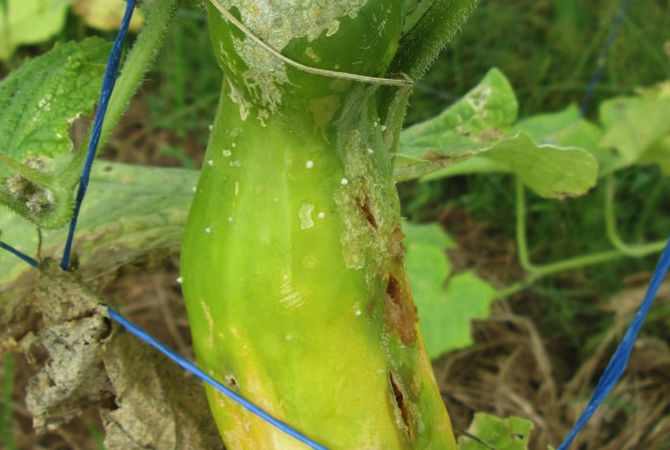
Options for Control
As the old saying goes, “An ounce of prevention is worth a pound of cure” and this rings true when it comes to controlling and preventing aphids. Various control and prevention methods include cultural controls, organic controls and chemical controls. Aphids are more likely to cause damage during springtime when temperatures range between 18.3 and 26.6 degrees Celsius and plants have a flush of new growth.
Gardeners should inspect plants several times a week for an outbreak of aphids so a quick treatment plan can begin. Inspect the upper and underside of foliage, as aphids will hide under a curled leaf and green aphids are harder to notice without a close inspection of the plant. It’s best to start with the least toxic methods of control first before using more toxic controls, which can affect nature’s pollinators like bees and butterflies. With a little attention and effort, you should have the aphids under control in no time.
- Clear all weeds from the garden before planting and keep the area weed-free, as aphids will overwinter in overgrown areas.
- Small infestations are treatable by blasting them off the infected plant with a strong blast of water from the hose.
- Wear gloves and wipe the aphids off the plants with your fingers.
- Use recommended amounts of nitrogen fertilizers and don’t overuse, as the nitrogen promotes rapid new growth, which attracts aphids.
- If you notice ants crawling on the plant and aphids are present, control the ants. Use ant baits placed at the base of the plant and give it several days to a week to work.
- Use an insecticidal soap, which is less toxic to pollinators, and thoroughly spray all portions of the plant. Insecticidal soaps can burn plants, so use when temperatures are below 32.2 degrees Celsius and when conditions are shadier such as late in the afternoon.
- Treat the aphids with a ready-to-use Neem oil product, following label instructions.
- Allow Mother Nature to take control in the way of predator insects like lady beetles who find aphids a fine-dining item on their menu.
